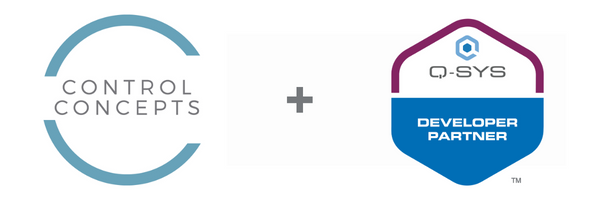
How to Make Hybrid Meetings Successful
As many companies begin to return to in-person work, technology will play a big part in the successful adjustment to new ways of meeting, collaborating, managing shared spaces, and hybrid meeting needs. Returning to in-person work will not be a flip of a switch, it will be a gradual transition and in many cases will not look the way it was pre-pandemic. With many team members desiring to continue to work remotely, office time will vary based on role, responsibilities, and business needs resulting in more “hybrid” meetings consisting of combination of in-person and remote participants. Additionally, with office spaces being reconfigured and repurposed to accommodate larger collaboration areas and less permanent work spaces in support of social distancing and workers that are in the office only when needed, scheduling and reservation of public areas will be key to efficiency and successful work flow.
Since March of 2020, we have seen AV technology needs shift in very distinct manners to accommodate commonly used meeting formats. AV systems that were pre-pandemic focused mostly on in-person meetings or conference calls involving two or more parties of several to many members. Typical meetings included traditional face-to-face interaction with a display for content and conference calls that focused on video and audio content sharing to “far end” participants.
As everyone shifted to remote work, video calls became more of the norm with each participant having an equitable position that effectively captured their individual contributions and reactions providing a comfortable, intimate connection with other participants though software tools like Zoom, Teams, and other collaboration applications.
While the return to in-person work would seem to prompt reverting back to pre-pandemic technology solutions, unique accommodations need to be considered to support “hybrid” meetings where some participants are local, some may be in a remote meeting space, and some may be connecting individually as remote participants. This newer use case introduces unique needs that are different from either fully in-person or fully remote arrangements and should be handled as such. However, without specific technology and solutions geared toward supporting hybrid meetings, their effectiveness will be limited and the satisfaction of participants will be impaired.
The shift to predominately remote work during the pandemic highlighted the importance of AV technology and its ability to facilitate business and personal communications. Many who had seldom, if ever, used video calls pre-pandemic became quickly accustomed to participating in Zoom or Teams calls. As a result, a precedent was set as to the expectations of the quality of the call, ease of operation, and most importantly the intimacy that a video call could provide for each individual participant. Although the personal connection of a web conference cannot compare to an in-person meeting; good quality video, clear audio, proper lighting, and a well framed camera image will ensure that each person’s facial expressions, body language, and voice inflection are effectively conveyed to their audience and other contributors in the meeting.
Moving forward, the hybrid meeting presents opportunities to continue to showcase the value of AV technology and the power of system integration and control. With remote meetings dominating most users’ experiences, the need to ensure that hybrid meetings are effectively executed for users is critical. The key to achieving a successful hybrid meeting resides in the ability to capture each constituent within a large conference room in a similar manner to remote participants who connect individually. Properly addressing this need and providing an effective solution can be achieved with an installed audio system that is programmed to communicate with pan/tilt/zoom cameras to synchronize voice tracking and camera movement. By strategically placing microphones calibrated to indicate who is talking and presetting camera positions to accurately capture their video, individuals within a conference room will have the same impact as remote participants through close up camera views that convey facial expressions and body language. Additionally, with quality audio that can isolate individual members of the meeting, their voices will be clearly and concisely conveyed. Through wireless or wired connections within a meeting space, video and audio content from personal devices can be shared as easy as it would when sharing a screen as a remote participant. Lastly, by calibrating an installed audio system within an in-person conference room, remote participants will avoid the need to suffer through with inconsistent audio levels and issues with poor audio quality including echo or inability to hear some contributors.
The support for effective hybrid meetings will be a key to the success of the return to in-person work and business communication needs. Control Concepts is uniquely positioned to be your technology partner with expertise in control, audio, and software development. The good news is that, in many cases, existing hardware and installation can be repurposed to support hybrid meetings. Most hybrid solutions can be accomplished by updating software, adjusting audio, and reprogramming equipment.
For more information and a free initial consultation on how Control Concepts can help with hybrid meeting needs, please contact projects@controlconcepts.net or call (201) 797-7900.
Control Concepts is a team of audiovisual professionals who specialize in software development, including modern programming languages, to expand the capabilities of typical AV systems and tackle challenges to seamlessly integrate products with complex APIs.
- Posted In:
- AV Industry Trends





